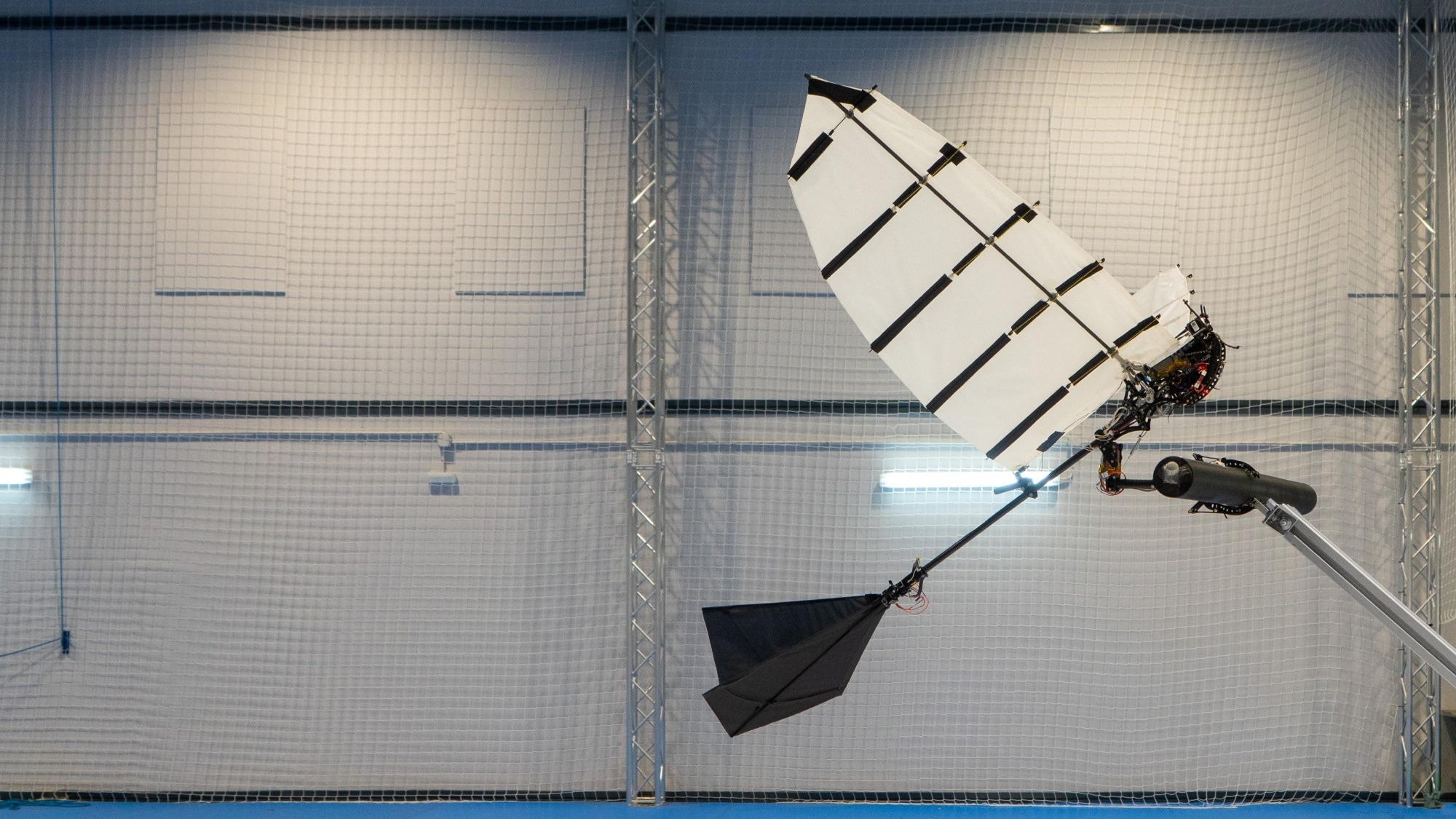
Image Credit: © Raphael Zufferey
The novelty could considerably help extend the scope of robot-assisted tasks.
The vision of a bird landing on a branch is responsible for making the maneuver look like the easiest thing ever, but in fact, the act of perching includes an extremely fragile balance of speed, timing, high-impact forces, and accuracy. It is a move that is highly complicated and no flapping-wing robot (ornithopter) has been able to control it so far.
Raphael Zufferey, a postdoctoral fellow in the Laboratory of Intelligent Systems (LIS) and Biorobotics ab (BioRob) in the School of Engineering, is the first author of a recent Nature Communications paper explaining the special landing gear that makes such perching feasible.
This was built and tested in collaboration with the University of Seville, Spain, as part of the European project GRIFFIN.
This is the first phase of a larger project. Once an ornithopter can master landing autonomously on a tree branch, then it has the potential to carry out specific tasks, such as unobtrusively collecting biological samples or measurements from a tree. Eventually, it could even land on artificial structures, which could open up further areas of application.
Raphael Zufferey, Postdoctoral Fellow, Laboratory of Intelligent Systems and Biorobotics ab, School of Engineering, École Polytechnique Fédérale de Lausanne
Zufferey adds that the potential to land on a perch could offer a highly efficient method for ornithopters—which, like several unmanned aerial vehicles (UAVs), have restricted battery life—to recharge with the help of solar energy, possibly making them perfect for long-range missions.
This is a big step toward using flapping-wing robots, which as of now can really only do free flights, for manipulation tasks and other real-world applications.
Raphael Zufferey, Postdoctoral Fellow, Laboratory of Intelligent Systems and Biorobotics ab, School of Engineering, École Polytechnique Fédérale de Lausanne
Maximizing Strength and Precision; Minimizing Weight and Speed
The engineering issues included landing an ornithopter on a perch in the absence of any external commands needed to regulate several factors that nature has already balanced so ideally.
The ornithopter should have the potential to be able to adjust considerably as it perches while still retaining flight. The claw is required to be pretty strong to grasp the perch and aid the weight of the robot without being so bulky that it can not be held high up.
Zufferey added, “That’s one reason we went with a single claw rather than two.”
Eventually, the robot is required to be able to perceive its surroundings and the perch in front of it regarding its own speed, trajectory, and position.
The scientists obtained all this by fitting the ornithopter with a completely onboard computer and navigation system, which was supplemented by an external motion-capture system to help it identify its position.
The leg-claw appendage of the ornithopters was calibrated finely to redress for the up-and-down oscillations of flight as it tried to sharpen in on and grasp the perch.
The claw itself was developed to absorb the forward momentum of the robot upon impact and to close rapidly and firmly to assist its weight. As soon as it is perched, the robot remains on the perch in the absence of energy expenditure.
In spite of having all these factors to take into account, Zufferey and his collaborators were successful, eventually constructing not just one but two claw-footed ornithopters to copy their perching outcomes.
Moving forward, Zufferey is already thinking about how their device could be extended and enhanced, particularly in an outdoor setting.
At the moment, the flight experiments are carried out indoors, because we need to have a controlled flight zone with precise localization from the motion capture system. In the future, we would like to increase the robot’s autonomy to perform perching and manipulation tasks outdoors in a more unpredictable environment.
Raphael Zufferey, Postdoctoral Fellow, Laboratory of Intelligent Systems and Biorobotics ab, School of Engineering, École Polytechnique Fédérale de Lausanne
Journal Reference:
Zufferey, R., et al. (2022) How ornithopters can perch autonomously on a branch. Nature Communications. doi.org/10.1038/s41467-022-35356-5.